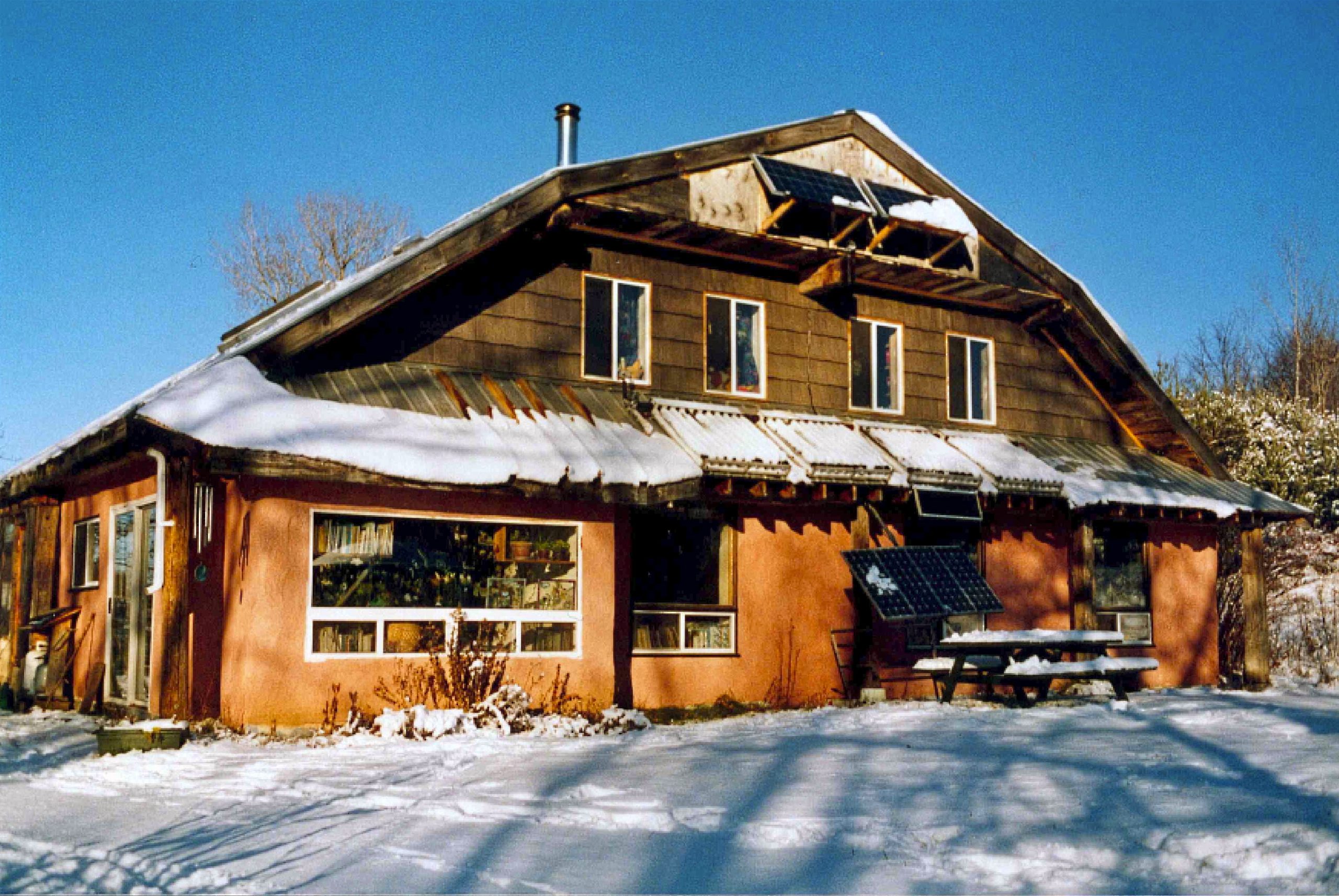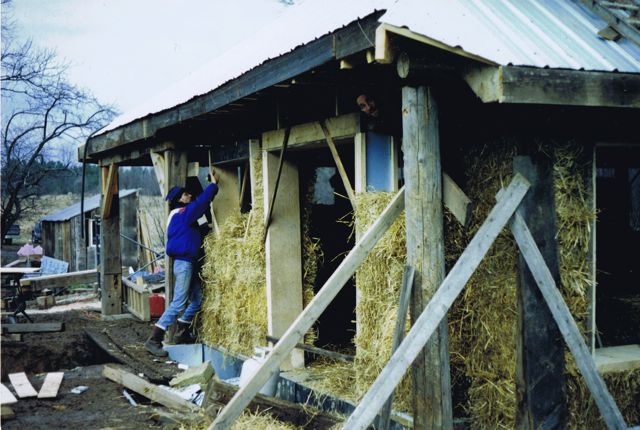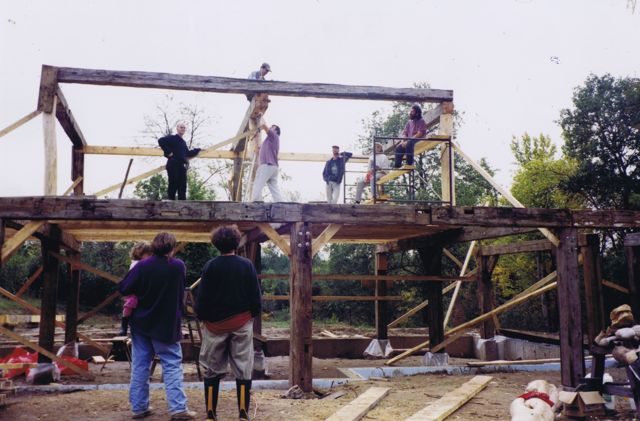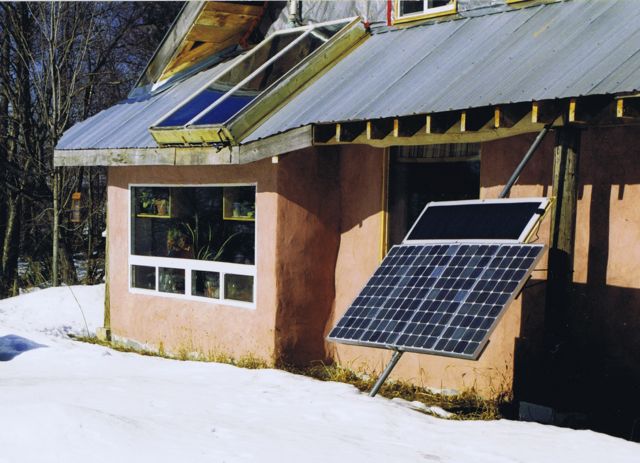Maybe the Weirdoes Weren’t So Weird After All
2016 marks the 20th year since the idea of building houses with straw bales completely transformed my life. Back in 1996, I wanted to build a home for my family that would achieve two seemingly simple goals:
- The home would make our lives financially sustainable by being affordable to build and having very low operating costs
- We’d have a smaller impact on the environment than conventional practices
While these were not particularly radical or even new goals, they certainly weren’t ones that we shared with many other people at the time. Our decision to go ahead and build the first code-permitted straw bale home in Ontario was met with many more quizzical looks or outright expressions of derision than interest or congratulations. Almost all of our reasons for building a low-cost, energy-efficient and environmentally friendly home where met with the question, “Why?”
You’re Using R-What?
Then: The notion of insulating a home was well accepted by that time (and even mandated by the building code), but the notion of using anything more than the low code minimum was largely seen as excessive. No insulation was required for basements or under slabs, and air tightness was only being discussed in whispers. The R-2000 program had been around for a while, but even many of its proponents thought the idea of a straw bale wall’s R-40 (or so was the number used at the time) and our plans for R-48 in the roof was kind of overkill. The most receptive audience for the kind of energy efficiency promised by straw bale building was among individual homeowners eager, like us, to greatly reduce or even eliminate heating bills from our monthly overhead, effectively “buying” us a degree of freedom from financial burden.
Now: This is the one area in which conventional building has started to wholeheartedly adopt the strategies of the early green builders. The building code is on a planned pathway to ever-higher levels of insulation and energy efficiency, including targets for improved air tightness. There are numerous voluntary standards to encourage homeowners and builders to exceed code minimum efficiency (such as LEED for Homes and Energy Star), and software programs for modeling energy efficiency. The Passive House standard, nearly unthinkable back in 1996, is gaining traction and showing what’s possible when energy efficiency is taken really seriously. It won’t be long before straw bale walls at R-30 barely meet code requirements, and must already be exceeded to meet the higher standards. It has never been so easy to build a truly energy efficient home.
Environmental Impact from Buildings?
Then: Even less understandable at the time was the urge to build with less of an “ecological footprint.” Even the term itself, which seems to have surfaced in 1992 (coined by Canadian ecologist and University of British Columbia professor William Rees), was unusual at the time, and the notion that choices regarding building materials could have a huge impact on the planet was just starting to be raised as an issue. The fledgling US Green Building Council, formed in 1993, was at the forefront of bringing this issue to light in North America… but nobody was really paying attention. And the idea that these environmental impacts could include climate change due to the high carbon output in the harvesting and production of building materials was nowhere on the public awareness radar.
Now: While there is still a long way to go to remedy the vast impacts that our building materials have on the environment, the problem is at least recognized and seems likely to start to be addressed seriously in the near future. An ever-growing body of data (ICE, EcoInvent, Green Footstep) can help to quantify environmental impacts, embodied energy and, of recent government and citizen concern, carbon footprint. I spent a year of my life writing a book called Making Better Buildings that presents data for a wide range of conventional and green building approaches. It is much easier now than ever before to have an understanding of the impact a building will have on the environment and make informed choices to minimize these impacts. Not many are making these choices, but the groundwork exists and government encouragement to make them seems likely. Advocates for materials like straw bale had a sound argument to make in 1996, and it finally seems to be catching the ear of the wider culture just now.
Renewable Energy?
Then: Our decision to go “off-grid” with our straw bale home wasn’t part of our original plan. But the high cost of hooking up to the grid mixed with a rapidly dwindling budget led us to live our first year or two in the home with no electricity other than a car battery hooked to the water pump. Surprised by the lack of discomfort (ample hot water came from solar collectors and a woodstove jacket), we were able to approach the idea of designing an off-grid electrical system as a way to provide “luxuries” like reading lights, a stereo and laptop computer use. Starting small, the system grew over time to include photovoltaic panels, wind and micro hydro. It was far from the slick systems that are readily available (and less expensive) today, but it met our needs and awakened my interest in examining conventional use of household energy and how high levels of personal comfort could come from vastly reduced consumption. From refrigerators that use cold air in the winter time to augment electric compressors to forays into early forms of LED lighting, the potential for minimizing needs without sacrificing amenities became a passion.
Now: The incredible drop in cost for photovoltaic panels has put renewables on a nearly even footing with fossil fuel energy… Incredible, considering the high levels of subsidies given to fossil fuels versus renewables. Here in Ontario, the MicroFIT program makes it financially prudent to put green energy onto the utility grid, and similar programs exist around North America. Energy storage is a top priority among researchers, with new battery technologies and systems beginning to make it to market. The distinction between being on- and off-grid could get blurry in the next decade as shared distribution of renewable energy on the grid combines with household storage capacity to re-shape household power solutions. This is one area where there are both improvements in the technology and more widespread adoption than twenty years ago. Codes, however, do not address these issues at all.
Sick Buildings and Healthy Materials?
Then: The World Health Organization coined the term “sick building syndrome” in 1984, as part of a study that found that over 30% of new or newly renovated buildings were the subject of health complaints by the occupants. The International Institute of Building Biologie and Ecology was formed in 1987. Not many people were listening. But this did not stop academic and lay researchers from questioning the ever-growing number of untested chemicals being combined in our building materials and wondering about the health impacts on building occupants. Those few who were concerned with this issue did not have a wide selection of commercially available products identified as being non-toxic to choose from. Homemade finishes were one important means of having control over what went into a building.
Now: Though an increasing volume and quality of research is showing the negative health effects of toxins in our buildings, this is an area has made very little headway into the mainstream. This despite the fact that we all have a vested interest in living and working in non-toxic buildings.
Small companies began to surface in the early 2000s dedicated to producing building materials free from proven or potentially toxic compounds. While few of these have mainstream distribution channels, it is entirely possible to build an entire house that has no or very little questionable chemical content. Programs like Declare and Cradle-to-Cradle ask manufacturers to fully disclose the ingredients for their building products, and the Living Building Challenge and other programs have chemical red lists to help homeowners and builders avoid potential toxins. There is no recognition of material toxicity in codes.
Low Cost Options
Then: A more regulated residential building sector was just a gleam in regulator’s eyes in 1996. Innovative projects were less cluttered with requirements, and builders could operate much more informally, outside the scope of prescriptions, taxation and regulation. This meant that several layers of cost did not necessarily have to be borne by a project budget then. Building wasn’t exactly cheap twenty years ago, but the possibilities for building less expensively were there to be pursued.
Now: More regulations that are more strictly enforced have definitely raised building costs over the last two decades. And building material costs have risen at a rate that has exceeded general inflation. Many decades of treating homes and real estate as short-term investment have raised land and building costs, making the cost of projects higher. Development charges, service fees, an increasing reliance on engineering approval and a more formalized scenario for builders have all put upward pressure on costs. It is more difficult than ever to build affordably, so even though the costs of building greener are well within the parameters of conventional costs, those conventional costs are increasingly out of the ability of a typical family to afford. There is no way my family and I could have acted on our 1996 dream if we were in the same position now in 2016. And that is saddening.
Everyone is Coming Down This Path
The forefront of ecological building is still a long way away from mainstream practice. But it’s not nearly as far away as it was twenty years ago; not a result of the leading edge practitioners being less adventurous or pushing less at the boundaries… rather, it’s the mainstream starting to pay attention. It may be a bit like watching a brontosaurus slowly turn its head to acknowledge an annoying bite on its tail, but it is starting to turning around.
Energy efficiency got the construction sector’s attention first. Material impacts on the environment (especially carbon) are increasingly gaining notice, and action on this front is likely in the near future. It won’t be long before occupant health likewise finds active proponents in government and industry, and the presence of toxins in the built environment begins to be treated as seriously as it should.
As I watch the behemoth slowly react, it seems worthwhile to acknowledge that, as with so much social change, the changes start on the fringe with creative thinkers and early adopters acting well outside the mainstream. It turns out that the weirdoes in 1996 were onto something, and that something is looking more and more like it makes “common” sense!



